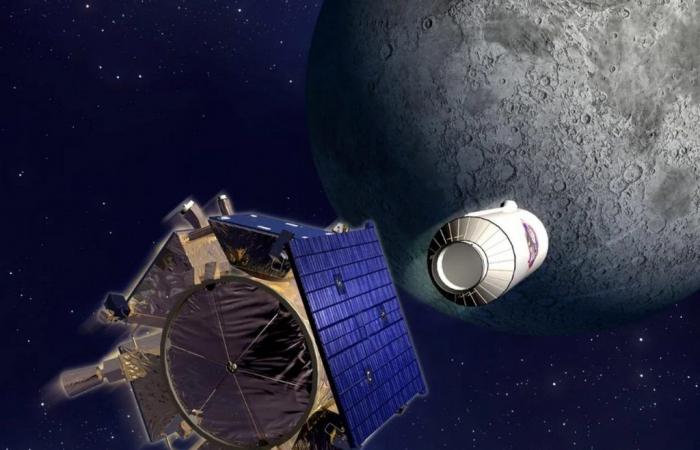It often happens that space missions provide new information several years or even decades after their completion thanks to technological and analytical innovations that make it possible to extract previously unusable data. This is, in a way, what happened with the LCROSS (Lunar Crater Observation and Sensing Satellite) mission that NASA conducted on the Moon in 2009 and whose scientific results have just been enriched.
Detect the presence of water
In a study published in Geophysical Research Lettersa team bringing together American researchers from John Hopkins University, Arizona and NASA, detail how they were able to detect the impact crater caused by the deliberate crash of a used Centaur rocket stage on October 9, 2009.
The objective of the LCROSS mission was to study the ejecta of volatile materials caused by the impact in order to detect, among other things, the presence of water. Four minutes after impact, the LCROSS probe flew over the area to collect data before impacting the surface.
However, the site selected for this was located in a permanently shaded area within Cabeus Crater, which prevented scientists from directly observing the crater after its formation.
A crater 22 meters in diameter
To locate and characterize the crater, the team of researchers used data from the Mini-RF instruments of the Lunar Reconnaissance Orbiter (LRO) probe and ShadowCam of the Korea Pathfinder Lunar Orbiter probe.
According to estimates from this data, the crater caused by the LCROSS mission impact has a diameter of approximately 22 meters and the ejected material came from a depth of approximately two meters.
“Recent” birds
The ejecta plume included a significant amount of water, estimated at 5.6 ± 2.9 mass percent, as well as minor amounts of other unspecified volatile species. Another lesson learned from these analyzes is that these volatiles were deposited or reworked over the last 100 to 500 million years, which is quite recent on the scale of the history of the Moon.
This “youth” and the chemical composition allow the authors of the study to hypothesize that these materials perhaps come from a comet or the solar wind. However, researchers do not completely exclude an endogenous origin resulting from volcanic activity.
NASA’s Viper mission was to extend LCROSS
If this study has enriched the understanding of the origin and distribution of water on the Moon, it requires additional research to confirm or refute the hypotheses. This was the role assigned to NASA’s Viper rover which was due to land at the South Pole of the Moon at the end of 2024 in search of ice and other potential resources. However, NASA announced last July that it was abandoning this mission due to an increase in its cost.
The American space agency has decided to turn to other methods to check the presence of frozen water at the South Pole of the Moon while saying it is ready to make the Viper rover available to interested American companies and institutions to resume the mission.






